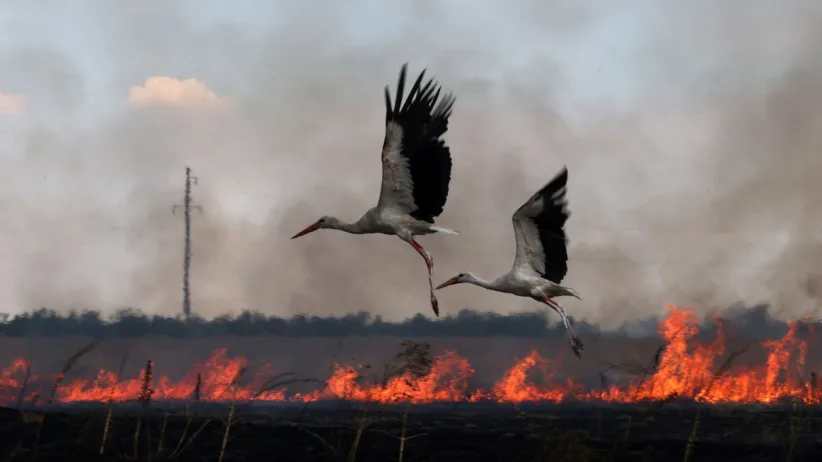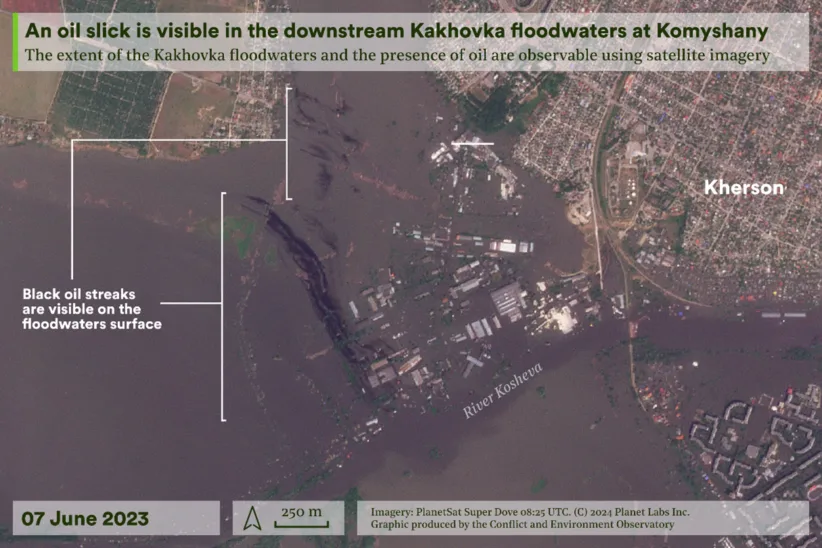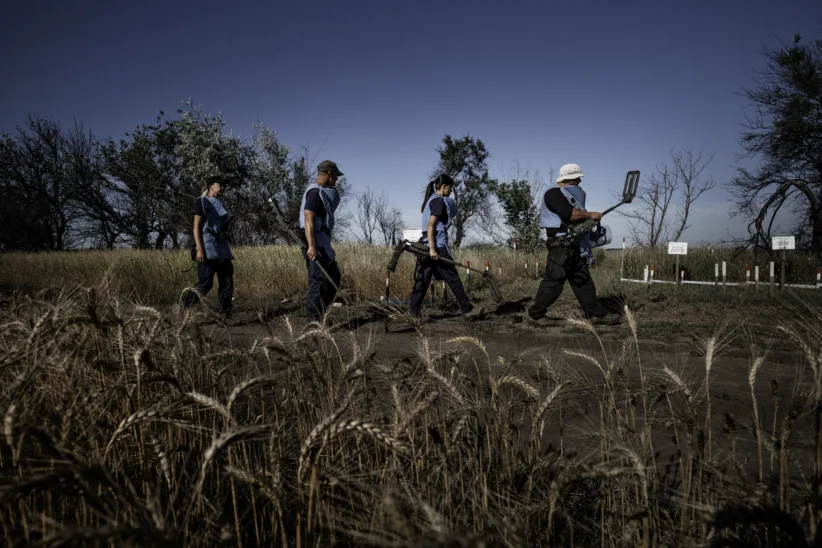The Silent Victim of the War in Ukraine
In a new report, "Assessing Environmental Degradation in Southern Ukraine," Norwegian People's Aid (NPA), in collaboration with the Conflict and Environment Observatory (CEOBS), reveals the extensive environmental damage caused by the ongoing conflict.

The study, although a snapshot, highlights significant pollution, infrastructure damage, and threats to agriculture and ecosystems in the Kherson and Mykolaiv regions. By documenting the impact of explosive weapons on soil, water, and biodiversity in this pilot project, the report underscores the urgent need for recovery and remediation efforts to protect both human health and the environment.
Impact of explosive weapons on the Environment
The use of explosive weapons causes immense human suffering and severe infrastructure damage, often generating conflict pollution.
“This can include burning oil fires, toxic spills, unexploded munitions, and demolition waste, at times posing both immediate and long-term threats to civilians and the environment. Often overlooked, conflict pollution can affect air, water and soil quality, impacting human health, livelihoods and ecosystems,” said Lead Researcher at CEOBS and one of the editors of the report, Dr. Anna McKean.
Pollution and Damaged Infrastructure
Soil and water samples collected during the study revealed a range of pollutants, including heavy metals and hydrocarbons. While some contaminants exceeded safe concentration levels, they were not assessed to pose immediate risks to people.

“We found that the use of explosive weapons had caused severe damage to critical infrastructure in Snihurivka in Mykolaiv region, including water treatment facilities, water towers, pumping stations, industrial plants, agricultural enterprises, irrigation canals, energy facilities and the railway station. Our findings also suggested that the Kakhovka dam breach in 2023 had mobilized pre-existing conflict pollution, such as oil spills, into wider areas,” McKean explains.

Threats to Food Security, Livelihoods, and Ecologically Important Areas
The war has left vast areas contaminated with landmines and other explosive ordnance, posing significant threats to livelihoods and food security. These remnants of war also risk polluting the land.
“Our findings indicate that explosive weapons have caused direct physical damage to soils and ignited landscape fires, and led to uncontrolled releases of pollutants from environmentally hazardous sites”, McKean said.
In the regions of Snihurivka, Komyshany and Zymivnyk in Mykolaiv and Kherson, this environmental damage has impacted ecologically important wetland and riverine habitats.
“To protect people and ecosystems and prevent further contamination, additional soil and water sampling is essential to clarify exposure risks to affected communities,” McKean added.

Massive explosive ordnance contamination
Since Russia’s full-scale invasion of Ukraine, the widespread use of explosive weapons, including landmines, cluster munitions, and aerial bombing, has led to massive explosive ordnance contamination. Areas analyzed are contaminated with landmines and other explosive ordnances, hindering land access and recovery.
“Continued survey and clearance efforts, like those conducted by NPA in Ukraine, are essential to prevent accidents, save lives, and enable environmental management and remediation when safe. Post-clearance soil sampling would enhance understanding of metal and energetic material dispersal from explosive weapons”, said Kristin Holme Obrestad, Special Advisor on Climate and Environment in NPA.
The Urgency of Protecting the Environment in War
The urgency of conflicts, explosive weapons and the triple planetary crisis necessitates stronger legal frameworks for environmental protection in relation to armed conflicts. Research and awareness are crucial for influencing military conduct and for understanding and addressing environmental harm. Access to environmental information is vital for empowering affected communities in recovery processes, but it is challenging to collect during ongoing conflict.

“This study demonstrated the potential for humanitarian and environmental organisations to cooperate in data collection in affected areas. Our research recommended further soil and water sampling in the study areas to clarify exposure risks for affected communities, to protect people and ecosystems, and prevent further contamination,” said McKean from CEOBS.
“As a humanitarian actor, NPA is committed to protecting both civilians and the environment from the use of explosive weapons and will continue our efforts through advocacy, field research, and collaborations with environmental experts”, NPA's Environment advisor Obrestad concluded.
